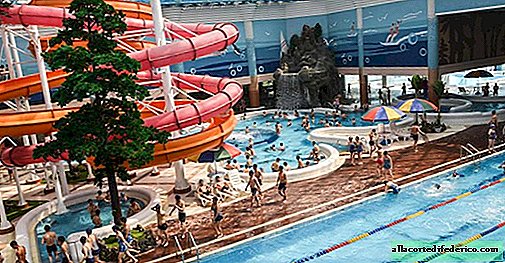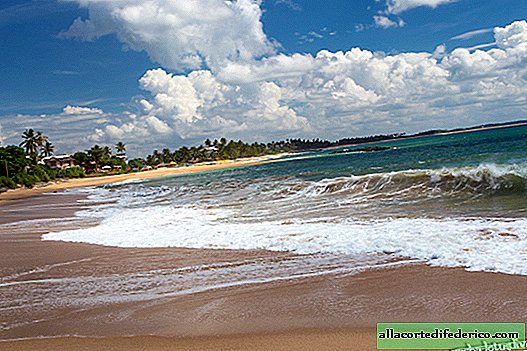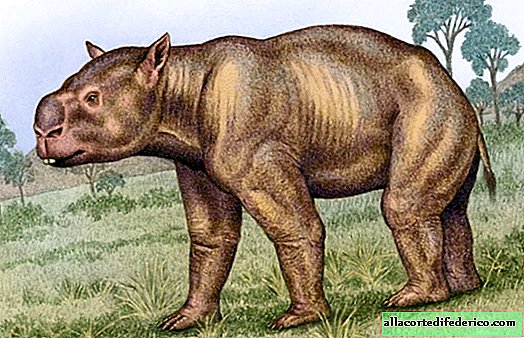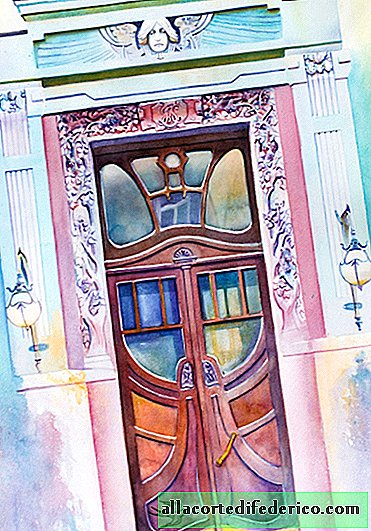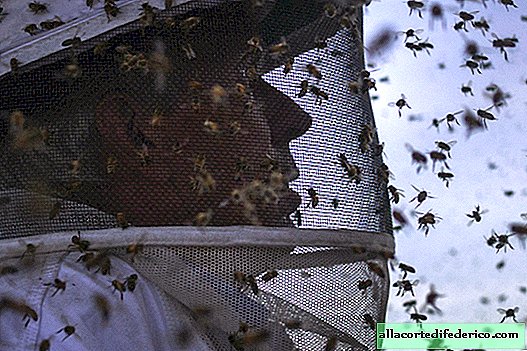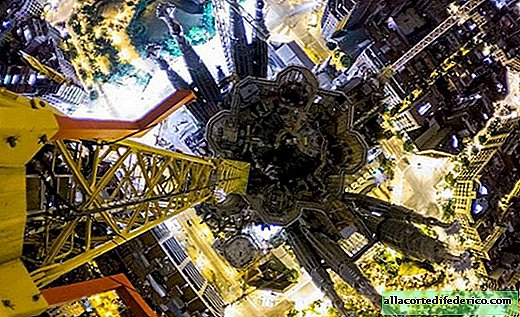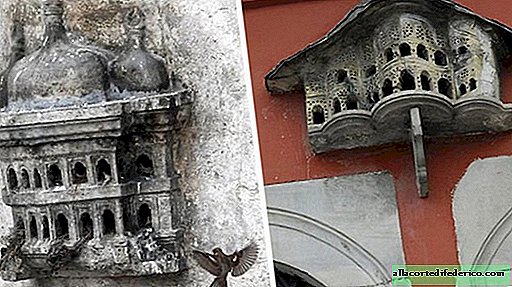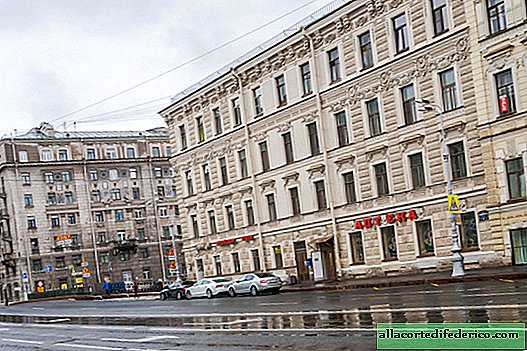Arrival in the Galapagos - Santa Cruz Island
Galapagos. An archipelago at the equator in the Pacific Ocean a thousand kilometers off the coast of Ecuador. Legendary islands, about which everyone at least once in their life heard something or watched a movie.
And yet the Galapagos can be safely called a paradise. It is here, as once in the Garden of Eden, that humans and animals live side by side in harmony, as far as this is possible in the modern world. There are a lot of animals, both land and sea, on the islands. Everywhere you look, something swims everywhere, crawls out of the water onto the shore, basks in the sun or picks grass.
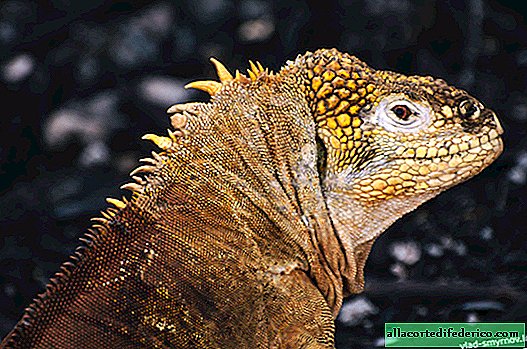



Moreover, it is most surprising that animals are not at all afraid of people. And the feeling of this is simply incredible.
Each island is inhabited by different birds and animals, many of which exist only in the Galapagos, and yet each island I especially remember for some particular species.
From Lima we flew to the islet of Baltra, where the military base of Ecuador and the airport are located. It was a cloudy day, and then the tropical rain fell. Dullness and gloom - these are my first Galapagos impressions. From moisture and heat, clothes soon got wet through and stuck to the body. We caught a ferry heading to the island of Santa Cruz. The shape of the steep coast was visible through the haze, as in a film about sailors of the past. Pelicans now and then landed on the bow and stern of the ferry, a fur seal emerged nearby a couple of times. That was just the beginning.
The bailiff was immediately transferred to the bus, since the town of Puerto Ayora, in which we planned to stay, is located on the other end of the island. Actually, there is no settlement in the crossing area, only bushes and stunted trees. Pretty moody picture during cloudy weather.
The road curled between the hills. In the center of the island, the relief has become more mountainous. The rain is over. We drove past a ranch, houses lined with greenery, and pastures. Herds of cows ... Birds ... Here and there, huge helmets on the grass caught my eye ... Stop. What other helmets? So I first saw, so far only from afar, giant Galapagos turtles.
Pelicans, seals, turtles - and that's all for one hour. Welcome to Santa Cruz Island!
Santa Cruz is remembered by me in several places.
Firstly, the fish market of Puerto Ayora. Every day in the late afternoon fishermen return with a catch and hand it over to sellers in the fish market.

At the same time, owners of cafes and restaurants come here to buy fresh fish for their establishments in the evening. It would seem like a common story, if not for one thing: besides humans, lured animals and birds — fur seals, pelicans, herons — are also pulling into the market.



Stingrays swim near the shore.

Life is seething. Animals fearlessly throw themselves at the feet of fishermen. Saleswomen are discussing something vigorously with customers. There are crowds of vacationers with cameras. This atmosphere must be felt, it can not be conveyed even in the photo.
Puerto Ayora itself is a typical resort town.

Crowds of vacationers, souvenir shops, fish restaurants and hotels for every taste and budget. There is nothing special to do here, except to live a couple of days exploring the island and planning a further route along the archipelago.
The main beach of Tortuga Bay is just an hour's walk from the city center. The path there passes through a grove of woody cacti. The sand is clean, the water is cool, the heat is unbearable. The owners of the beach are marine iguanas.

They are everywhere. Move on the sand ...

... sitting on black rocks, squinting in the sun, swimming, sleeping in the shade. In the cold-blooded gaze of a reptile, ancient calmness shines through.

Sometimes iguanas begin to tremble and spit. At this moment, they seem especially scary and dangerous, although in fact marine iguanas are harmless creatures that feed on algae.
At the end of the beach is a bay with mangroves ...


... and groves of cacti.

Actually, Galapagos beach lovers gather here.


To look at the Galapagos life without resort gloss and chic, I went to the interior of the island. First I reached the village of Ballavista and from there climbed the highest point of the island - Mount Cerro Croker (864 m). The farmer took me to the pickup truck before the end of the primer. Further through the thickets of endemic bushes, a path curled upward. I haven’t met anyone on the route.

The sun kept hiding behind the clouds. Then the sky was completely cloudy.

The higher, the more blackened trees covered with moss.

When I finally reached the mobile tower at the top, it started to rain and fog crept up the mountain.

It immediately became uncomfortable and lonely. And on the descent, I liked a Japanese-style tree with white birds.

Having a snack in a local tavern with bean soup and boiled pork skin with potatoes, I hitchhiked to another village - Santa Rosa. Five kilometers from the village are two craters - Los Gemelos.

In fact, these are failures of volcanic tunnels. Birds nest here. At the edge of the gap in the shade under the trees it is very pleasant to relax after a long journey along the road from Santa Rosa.
Santa Rosa herself is a sleepy village with old people peeking out from behind a fence and a roadside bar where men cut into billiards, and Latin American country and the knock of balls are carried from its open window. A ranch is located west of Santa Rosa. The primer goes through a real tunnel of trees.

Around - pastures on which farm cows graze. And giant Galapagos turtles.

They look out from the grass with wary curiosity, watch you off.

Walking along this road with turtles is my biggest impression of the island of Santa Cruz. Except occasionally passing pickups, silence reigns. Dense crowns of trees give coolness. Your task is to silently go and look around. Sometimes there will be a feeling that you are being watched. The way it is. Just look and you will see them. Elephant turtles.




